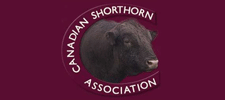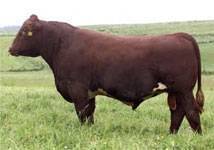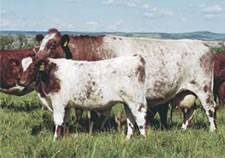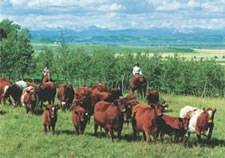Canadian Shorthorn Association
The Shorthorn breed had its founding about 225 years ago in Durham County in North East England. Shorthorn cattle are medium framed with mature females in the 1400 -1600 pound range and bulls ranging from 2200 - 2400 pounds in working condition. They are available both horned and polled with homogeneous polled genetics also available. The main colour variations are solid red, red with white markings, and roan and white, which gives commercial producers several different options to select from to suit their situations.
Shorthorn genetics have always provided a strong maternal trait. The Shorthorn female, purebred or crossbred, has long been sought after for its early maturity, fertility, ease of calving, milk production, longevity and docility. Carcass traits have been an area where the exotic or terminal breeds have excelled. With the more recent return and focus on a moderate carcass with consistent superior marbling, the carcass traits of the Shorthorn breed have become more popular. Feedlot tests reveal that Shorthorn influenced cattle reach the optimum carcass weight at an earlier age with a higher percentage of AA+ marbling. While exotic breeds will claim more muscling and larger rib eyes they cannot compete with the consistent, well marbled, high yielding Shorthorn carcasses.
Today's Canadian Shorthorns continue to prove that they play a very important role in the future of the beef industry. While many breeds portray themselves as being balanced and versatile, none of them compare to the ability of Shorthorn genetics to adapt and improve in a variety of crossbreeding situations.



